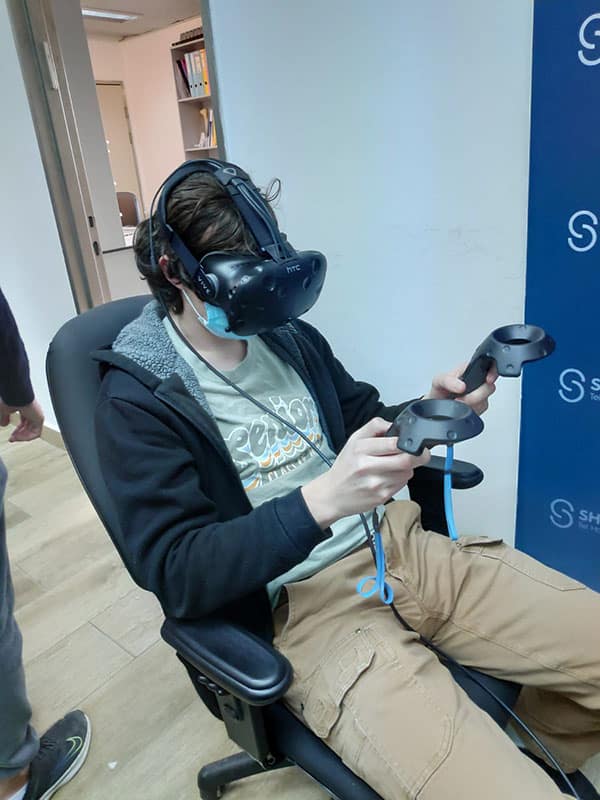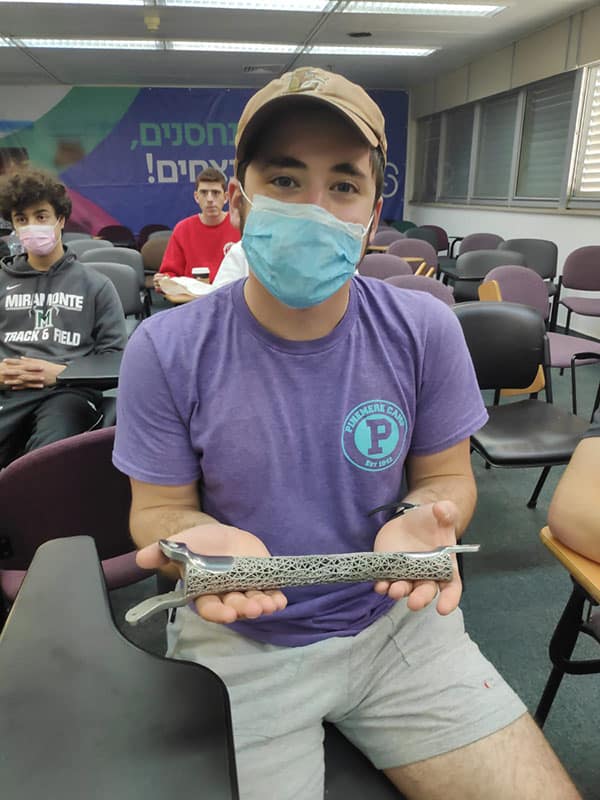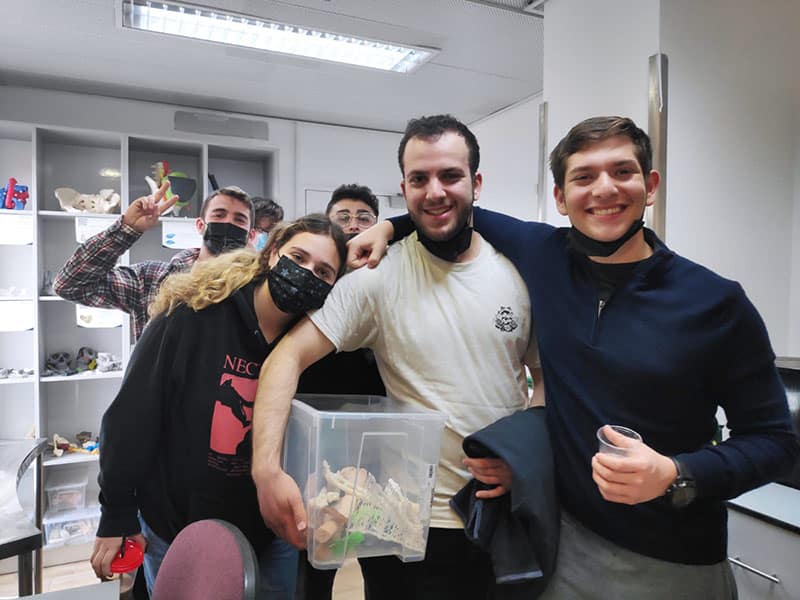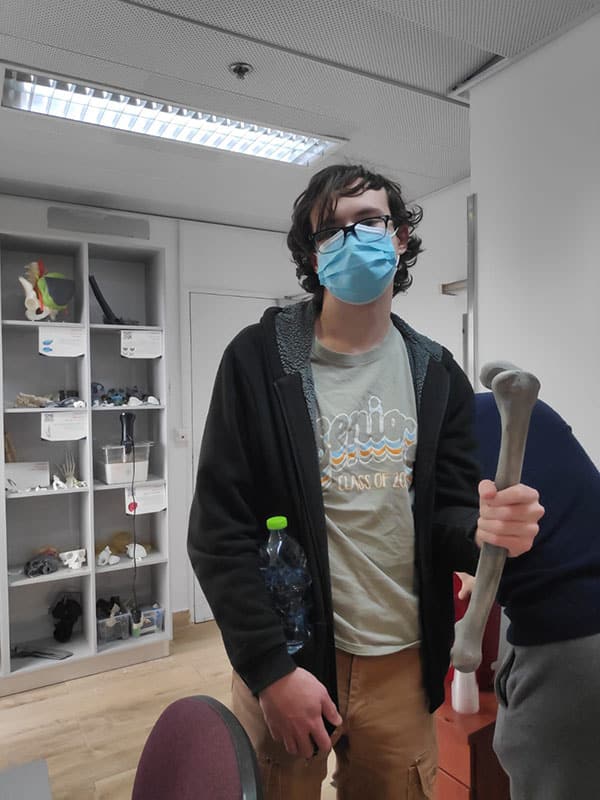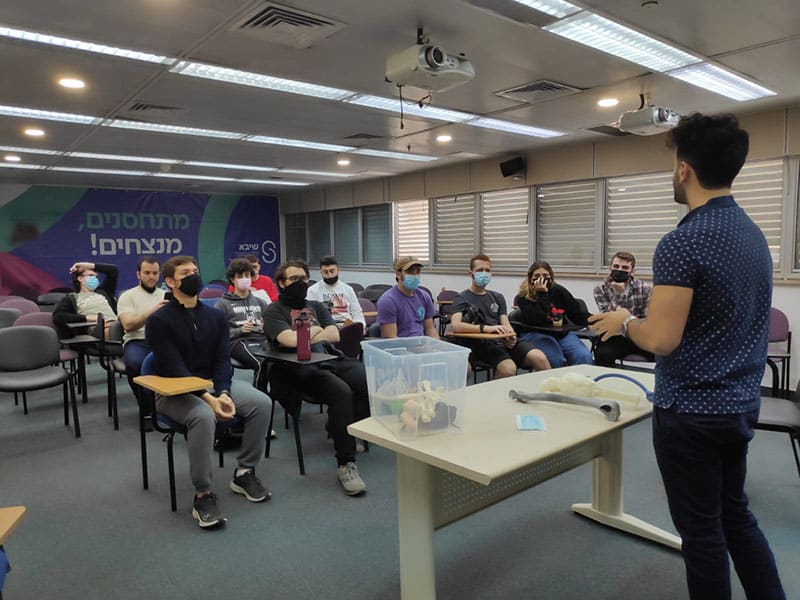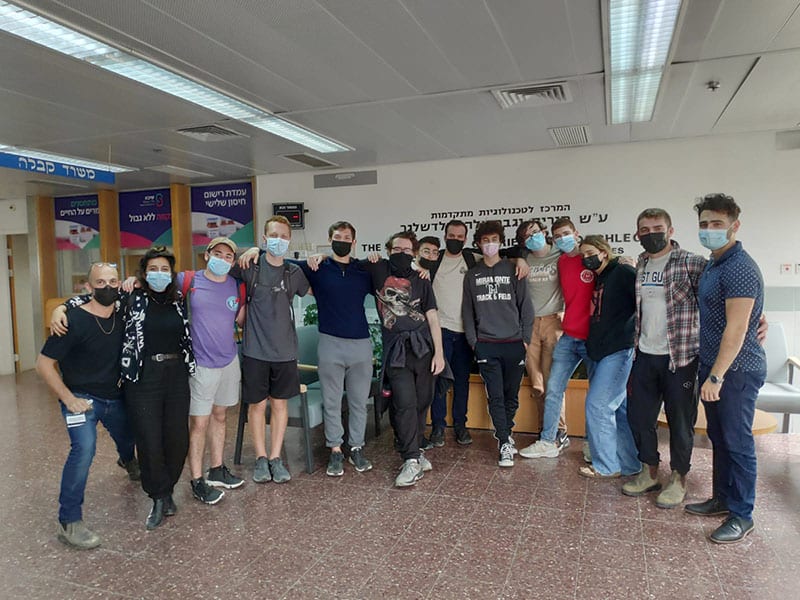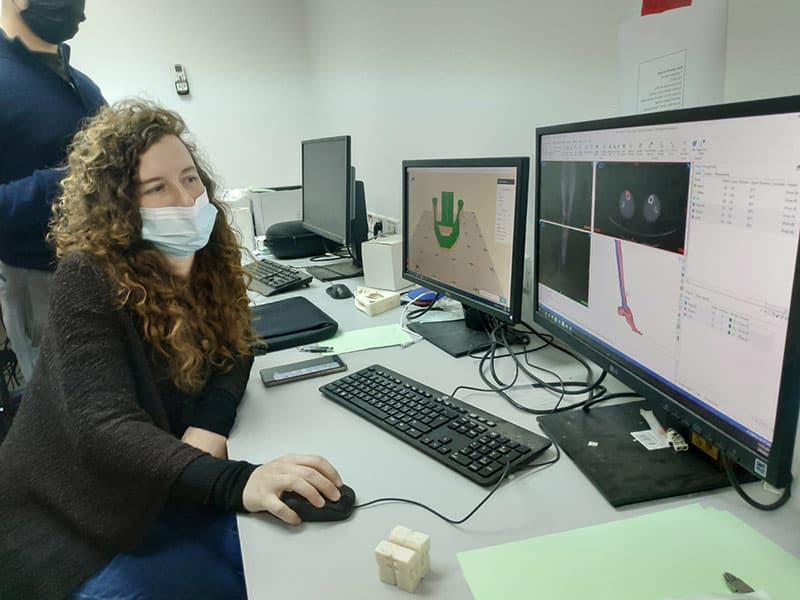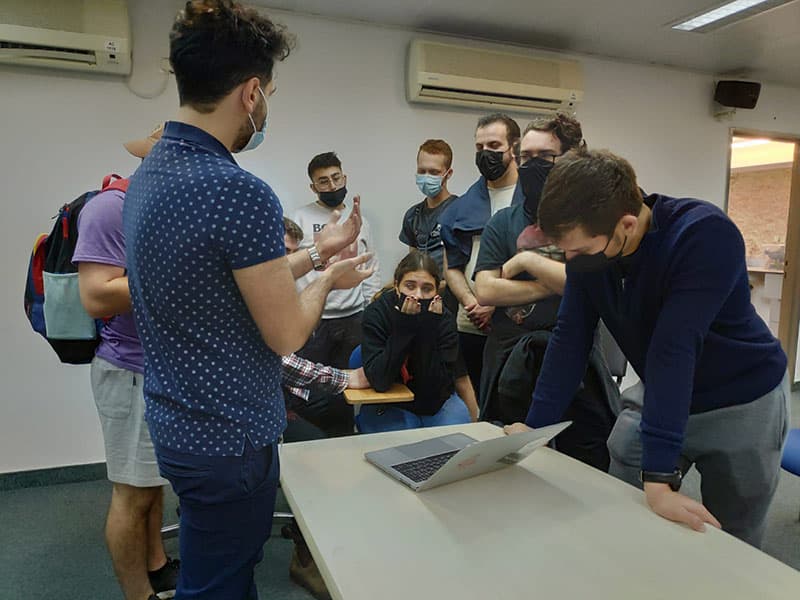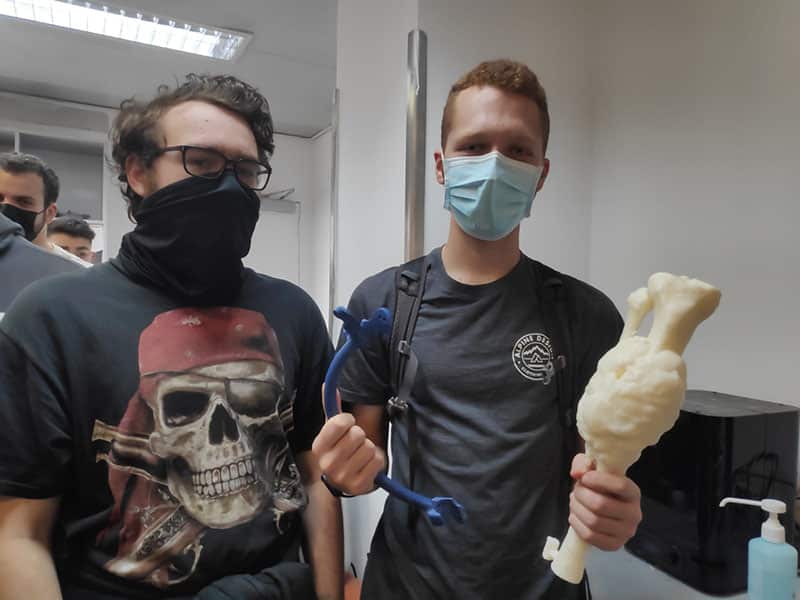This March, I and the other students participating in Aardvark Israel’s Big Idea program took a trip to a unique location – the technology innovation lab at Sheba Medical Center. While Big Idea has toured several interesting places before during this year, this was the first time we had visited somewhere where we could see technology being used in a medical application. We met with an intern working in the lab, Asaf Bloch, who explained to us what they did to help patients at the hospital. Essentially, when a patient has a unique or rare affliction, the lab is asked to see if they can’t find a better solution than the doctors to the unique problem. The lab uses Virtual Reality, 3D modeling and printing, and cement casting all to work towards finding these solutions, and more often than not, their involvement in a patient’s treatment leads to positive results.
For example, Asaf showed us a 3D printed model of a tibia bone with a massive tumor on it. He explained that the patient who the bone belonged to would have had to have their leg amputated to survive had the doctors not decided to let the lab try to find a better solution first. The lab did, in fact, find one; using the 3D model Asof was now showing us, the lab workers were able to create a measuring device that could latch onto the patient’s leg bone at specific points, serving as guidelines for the surgeon which section of the bone to cut out, leaving the rest of the bone inside the leg. Then, using a bone donation and the patient’s own fibula bone, they grafted on a replacement part in place of the tumorous area. The result was that the patient was able to walk again, and left the hospital on their own two feet, where otherwise they would have had to leave in a wheelchair, or at best a prosthetic.
After showing us models of different patient’s issues, such as the tumorous bone, and explaining the stories of the solutions the lab and created, Asof then showed us the VR simulation and the modeling program the lab used to come up with their ideas, and then print models of them for use as reference or a prototype. We were allowed to wear their VR headset and look at a model of a different bone, allowing us to see how the lab workers brainstormed their ideas.
We were then given the opportunity to see a video of surgeries in detail. Those who did watch found the experience very educational.



